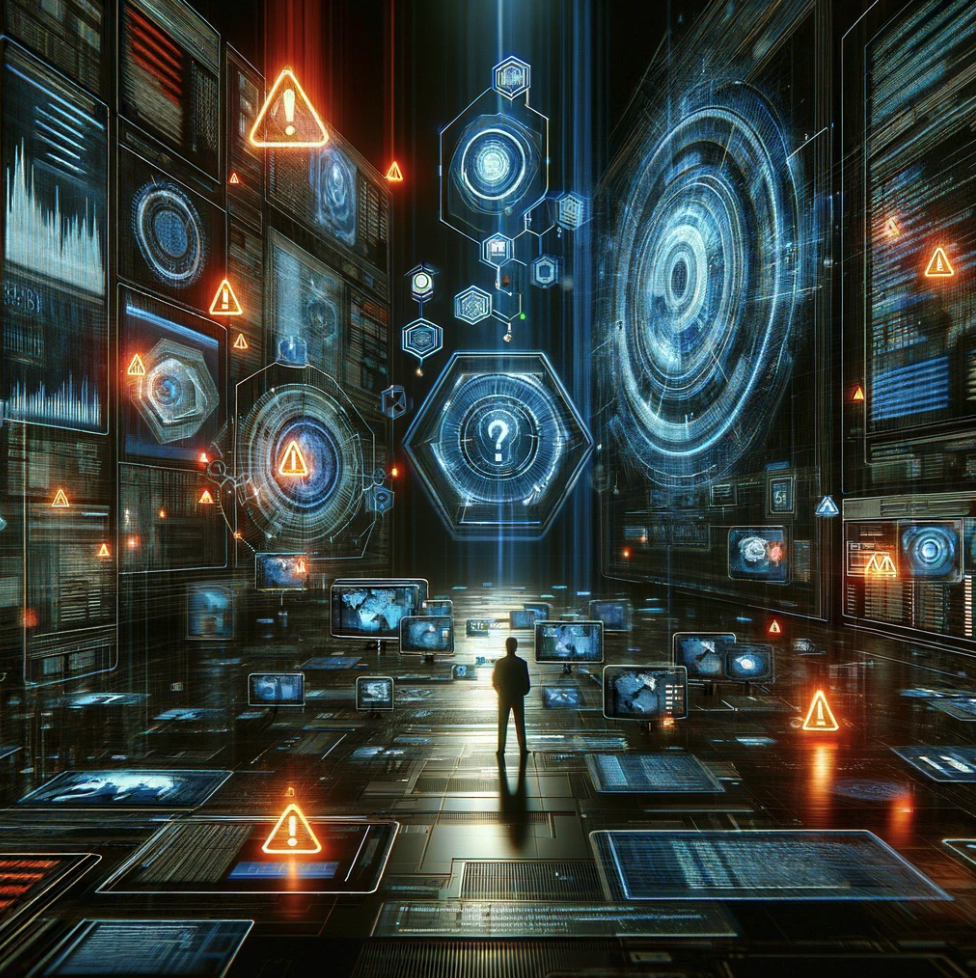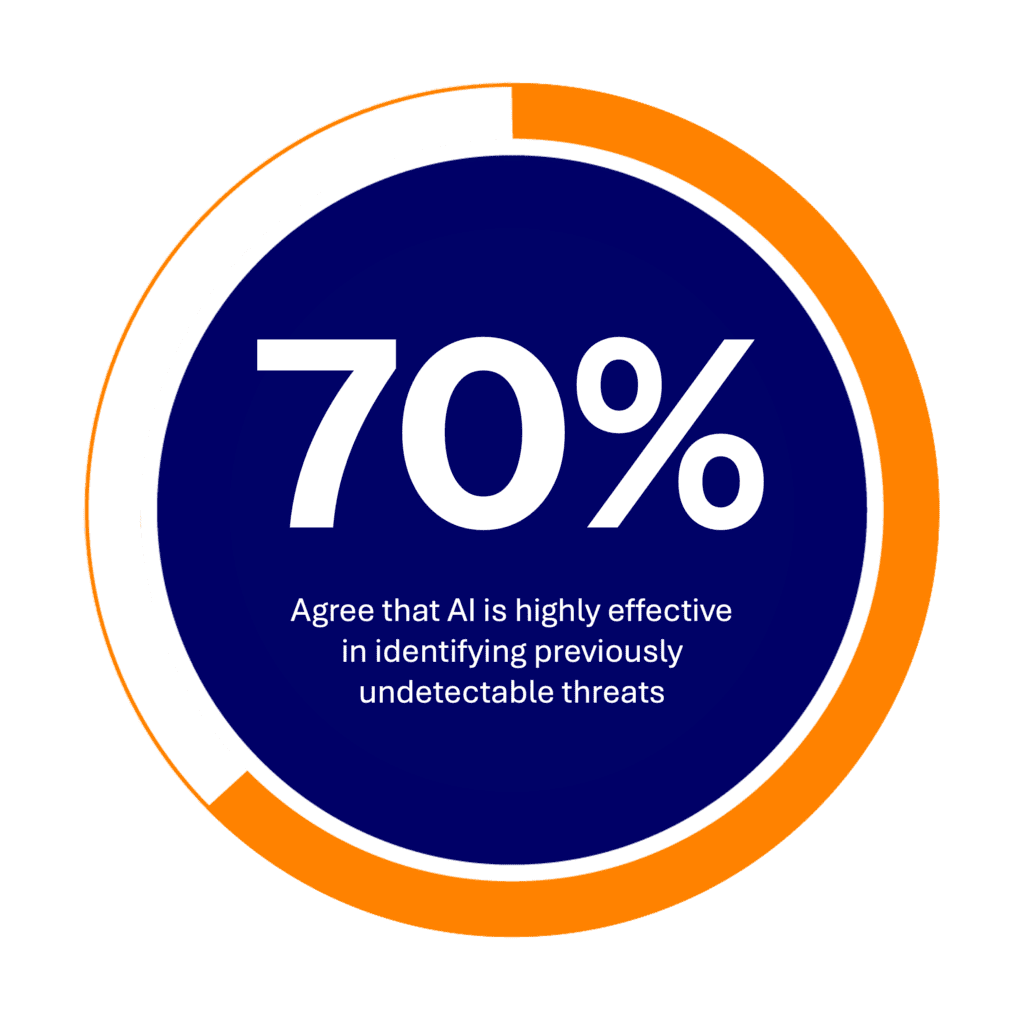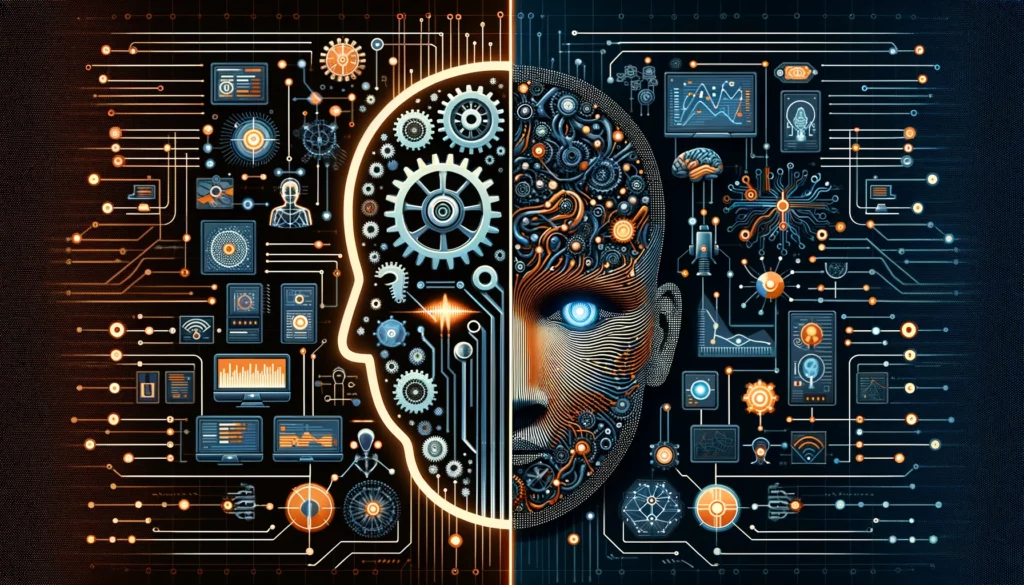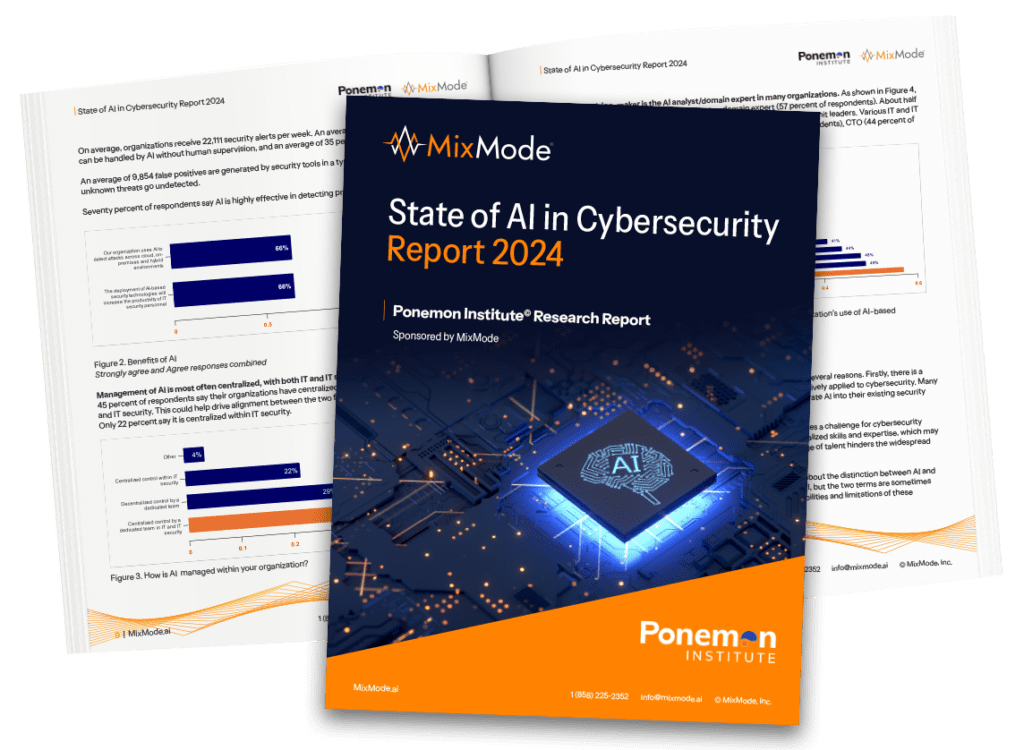The cybersecurity landscape is under siege. Organizations are bombarded by a relentless barrage of security alerts, often exceeding a staggering 22,111 per week on average. While Artificial Intelligence (AI) has emerged as a powerful tool to manage this overwhelming volume, its effectiveness isn’t without limitations, as vendors flood the market with false advertising and promises.
As we continue to investigate the findings in MixMode’s inaugural State of AI in Cybersecurity 2024 report, we find that false positives and undetected threats remain significant hurdles for security teams, demanding continuous improvement of their capabilities to maximize their potential.
If you haven’t already, download the report and follow the blog series to gain practical insights and strategies for implementing AI in your security framework.
Drowning in Data:

Security teams are still struggling with an overflow of alerts. The report found that an average of 9,854 false positives arise weekly, wasting valuable time and resources as analysts investigate these non-issues. Moreover, undetected threats present an even more significant concern. The average organization fails to identify a staggering 12,009 threats each week, leaving vulnerabilities exposed.
Imagine this: you’re a cybersecurity analyst tasked with safeguarding your organization’s attack surface. But instead of strategically deploying defenses, you’re buried under an avalanche of security alerts. Thousands of alerts bombard your console daily, a relentless barrage threatening to consume your entire workday.
This overwhelming volume is the reality for many security analysts. While security tools play a crucial role in detection, they often generate many false positives – harmless activities mistaken for threats. These false alarms are like smoke detectors going off whenever you toast a bagel, forcing you to waste time investigating non-issues.
The consequences are dire, as exhausted analysts are more likely to miss genuine threats amidst the noise.
How AI Can Help Security Analysts Breathe
Here’s where Artificial Intelligence (AI) steps in as a life raft for drowning security analysts. AI can be trained to handle the initial triage and investigation of these alerts. Imagine a tireless assistant efficiently sifting through notifications, identifying patterns, and filtering out false positives.
This newfound focus allows security analysts to:
- Dive Deeper: With AI managing routine tasks, analysts can dedicate their expertise to in-depth analysis of complex threats. They can investigate suspicious activity, understand attacker motivations, and develop targeted mitigation strategies.
- Become Threat Hunters: Unburdened by the constant stream of alerts, analysts can shift from reactive to proactive. They can leverage AI-powered threat intelligence to discover emerging attack vectors and proactively bolster defenses before attackers exploit them.
- Sharpen Their Skills: Freed from the tedium of false positives, analysts can hone their critical thinking and decision-making skills. They can focus on developing creative solutions to combat constantly evolving cyber threats.
The human-AI collaboration in cybersecurity is a powerful force multiplier. AI is a tireless assistant that handles the heavy lifting of alert fatigue and initial analysis. This empowers analysts, allowing them to leverage their expertise on the most critical tasks, ultimately creating a more secure digital environment for everyone.
By the Numbers

There’s no denying the benefits of true AI in security operations. The report indicated that, on average, AI can independently handle 51% of security alerts, significantly reducing the burden on human analysts. This translates to a more streamlined workflow, allowing professionals to focus on complex threats requiring expertise. Additionally, 70% of respondents report that AI is highly effective in identifying previously undetectable threats, a game-changer in the fight against evolving cyberattacks.
The Cybersecurity Skills Gap: Where AI Steps In
The cybersecurity industry has been grappling with a severe talent shortage for years. A recent report estimates a global cybersecurity workforce gap of 3.4 million professionals, creating a critical vulnerability for organizations. This shortage hinders the ability to effectively manage the ever-increasing volume of security alerts, potentially leading to missed threats and security breaches.
The report validated that AI has emerged as a valuable solution to address this talent gap in several key ways:
- Upleveling Existing Teams: AI automates tedious tasks like initial alert triage and investigation, freeing up human analysts to focus on higher-level analysis and incident response. This allows them to leverage their expertise more effectively, enhancing team efficiency.
- Bridging the Gap: AI can handle a significant portion of routine security operations, effectively filling in the gaps left by the talent shortage. This allows organizations to maintain a robust security posture even with limited human resources.
- Democratizing Security Expertise: AI-powered tools can be designed to be user-friendly and accessible to individuals with less cybersecurity experience. This empowers a broader range of employees to contribute to security efforts, fostering a more security-aware culture within the organization.

The Path Forward: A Collaborative Future
The future of cybersecurity lies in a collaborative approach between AI and human expertise. By leveraging AI’s tireless vigilance and advanced analytical capabilities, combined with the experience and intuition of human analysts, organizations can create a more robust and efficient security posture, enabling analysts to:

SiftThrough the Noise: Advanced AI algorithms can analyze vast amounts of data to identify patterns and anomalies. This helps prioritize genuine threats amidst the flood of alerts, ensuring analysts focus on what truly matters.
Smarter Alerts: AI can learn from human analysts’ decisions over time, continuously improving its ability to differentiate between real threats and false positives. This reduces alert fatigue and allows analysts to concentrate on the most critical issues.
By embracing this collaborative approach, organizations can mitigate the deluge of security alerts, address the cybersecurity skills shortage, and build a more secure future.
Introducing MixMode: Your Advanced AI-Powered Partner
MixMode leverages the power of advanced AI to empower your security team. The MixMode Platform goes beyond simple anomaly detection, offering a comprehensive platform that:
- Reduces False Positives: MixMode’s AI constantly learns and adapts to understand an environment to minimize false positives and surface threats that matter, freeing up analyst time for deeper investigations.
- Surface Hidden Threats: The MixMode Platform detects sophisticated threats that may bypass traditional methods, ensuring your defenses remain robust.
- Augments Human Expertise: The MixMode Platform works seamlessly with your existing security tools, providing analysts with valuable insights and context to make informed decisions.
The Future is Collaborative
The future of cybersecurity lies in a collaborative approach between AI and human expertise. By leveraging AI’s tireless vigilance and advanced detection capabilities, combined with the experience and intuition of human analysts, organizations can create a more secure and efficient security posture.Don’t let the cybersecurity skills shortage leave your organization vulnerable.
Contact us today to discover how AI can empower your security team and help you build a more secure future. Let’s bridge the talent gap and conquer the evolving threat landscape together.
Other MixMode Articles You Might Like
MixMode Included on Forbes’ America’s Best Startup Employers 2024 List
The Evolving Threat Landscape: Why AI is Essential for Cybersecurity Success
AI and Cybersecurity: A Rob Burgundy Investigation
Chat GPT and Nation-State Attackers: A New Era of AI-generated Attacks
City of Dallas Selects the MixMode Platform to Fortify Its Critical Infrastructure


